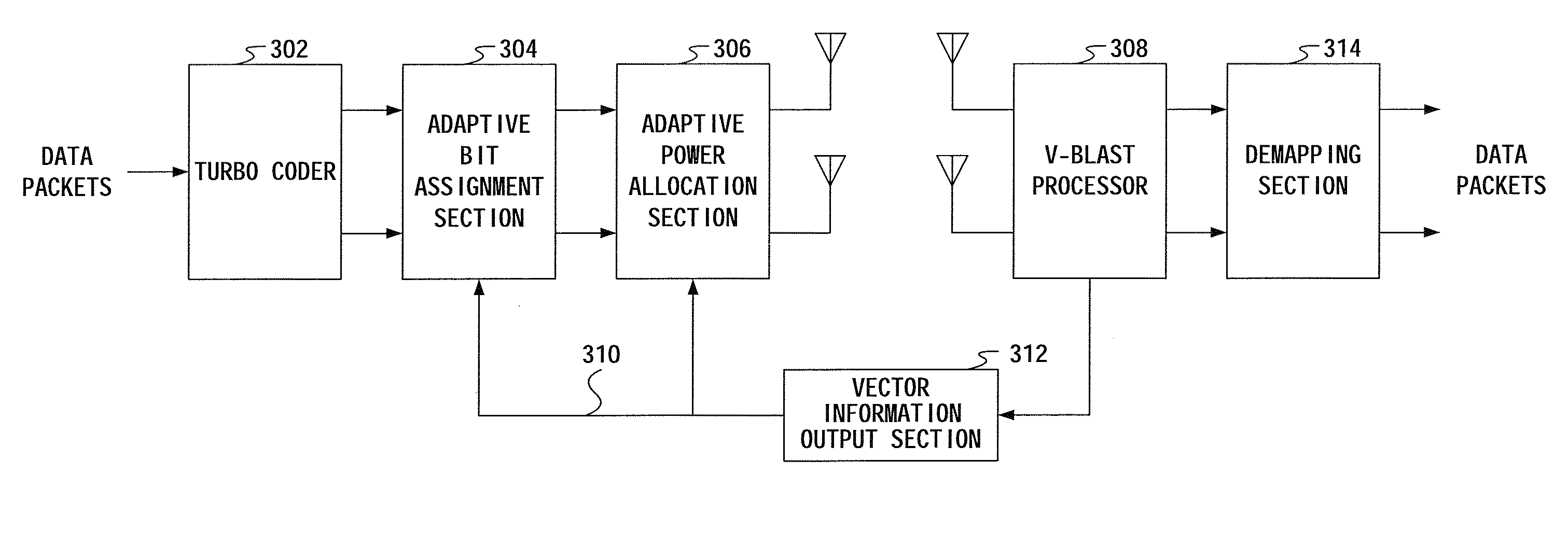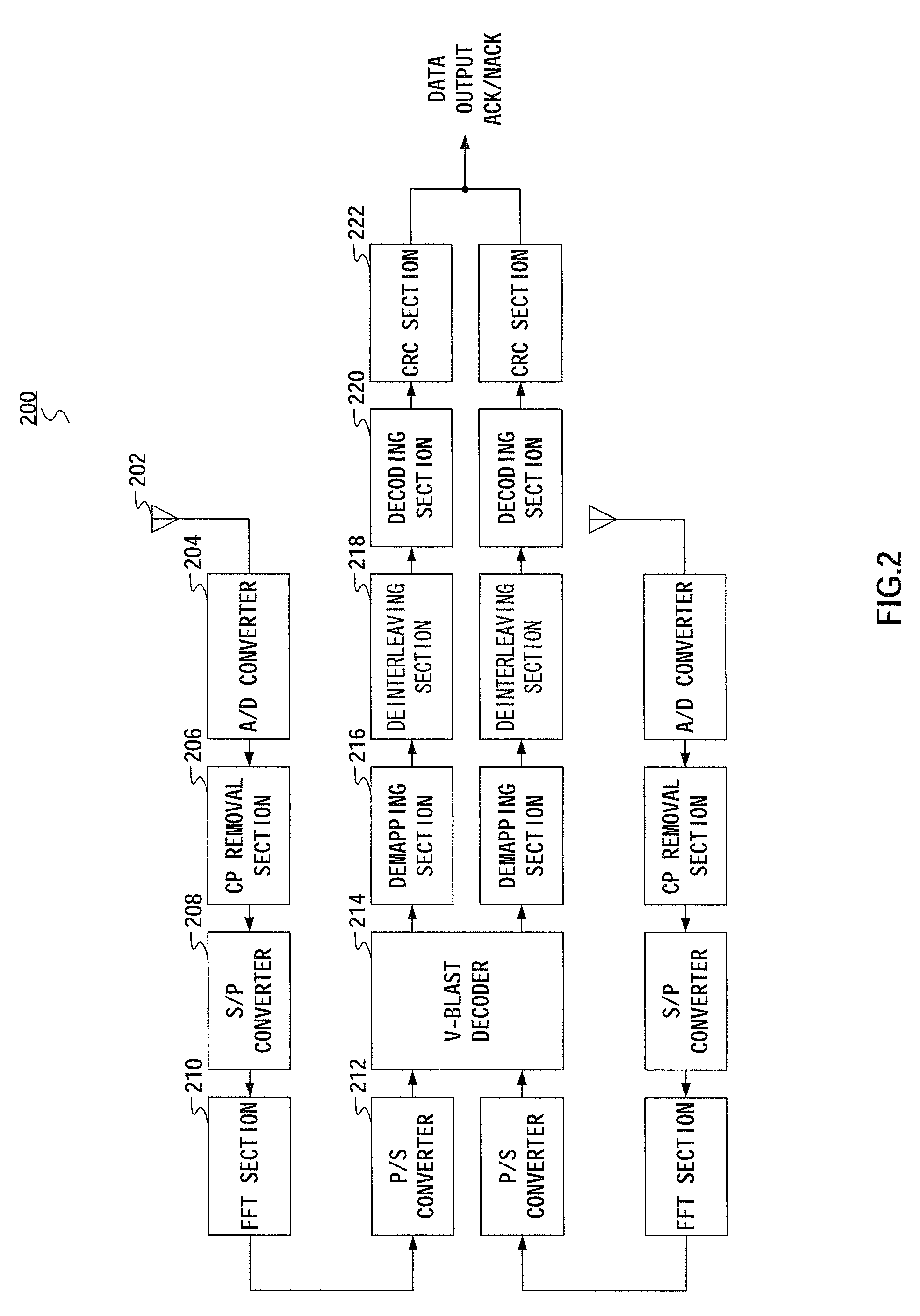Link-adaptation system in mimo-ofdm system, and method therefor
a link adaptation and communication system technology, applied in the field of link adaptation systems in multiple input multiple output (mimo) communication systems, can solve the problems of high processing complexity, high cost, and high cost, and achieve the effect of reducing processing complexity and reducing signaling feedback overhead
- Summary
- Abstract
- Description
- Claims
- Application Information
AI Technical Summary
Benefits of technology
Problems solved by technology
Method used
Image
Examples
Embodiment Construction
Problems to be Solved by the Invention
[0010]However, there has so far been no disclosure of techniques that apply link adaptation to MIMO-OFDM systems.
[0011]It is therefore an object of this invention to provide a system and method for link adaptation allowing optimum bit assignment, while reducing the processing complexity and decreasing the signaling feedback overhead in MIMO-OFDM systems.
Means of Solving Problem
[0012]The present invention adaptively controls the number of bits to be assigned to each of sub-carriers on different antennas and power to be allocated to each transmit antenna, based on feedback information provided by a V-BLAST processor at the receiver. The present invention determines, at the receiver, if the AMC level for next frame transmission should be increased or decreased, depending on ACK / NACK information, and determines the amount of AMC level increment / decrement, depending on a set of link quality information obtained through V-BLAST processing.
ADVANTAGEOUS...
PUM
 Login to View More
Login to View More Abstract
Description
Claims
Application Information
 Login to View More
Login to View More - R&D
- Intellectual Property
- Life Sciences
- Materials
- Tech Scout
- Unparalleled Data Quality
- Higher Quality Content
- 60% Fewer Hallucinations
Browse by: Latest US Patents, China's latest patents, Technical Efficacy Thesaurus, Application Domain, Technology Topic, Popular Technical Reports.
© 2025 PatSnap. All rights reserved.Legal|Privacy policy|Modern Slavery Act Transparency Statement|Sitemap|About US| Contact US: help@patsnap.com



